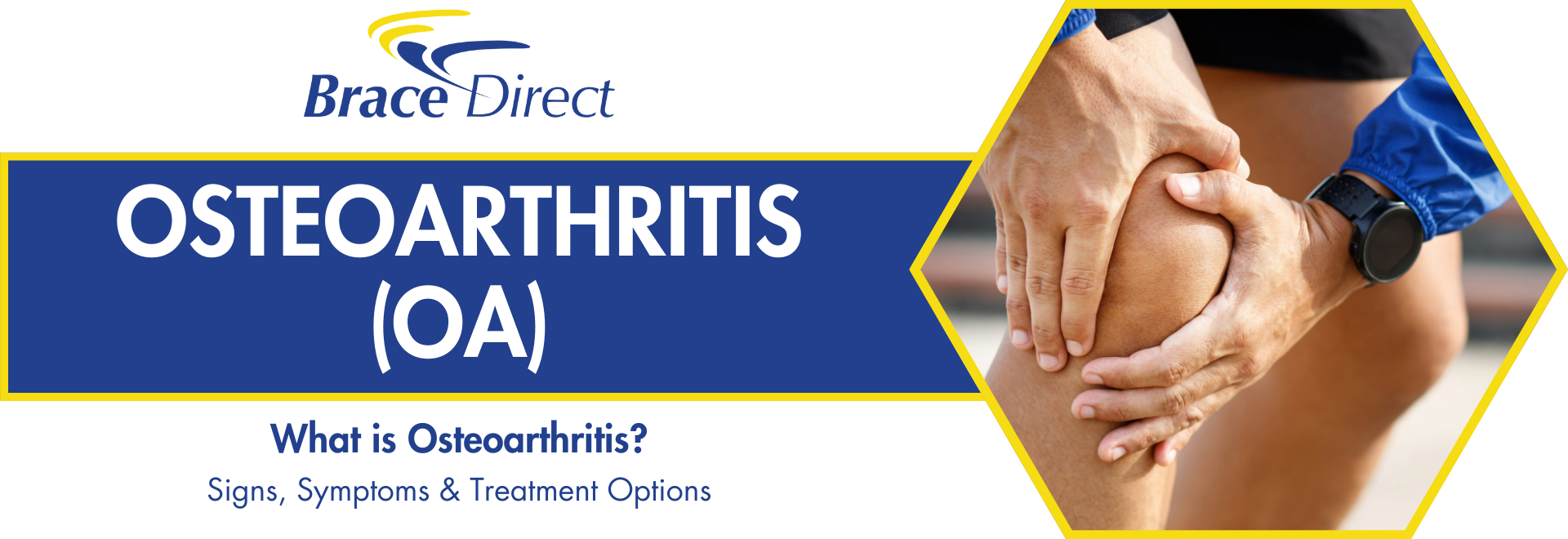9am - 5pm EST M-F
9am - 5pm EST M-F

Osteoarthritis (OA) is the most common form of arthritis, affecting millions of people worldwide. It occurs when the protective cartilage that cushions the ends of your bones wears down over time. Although OA can damage any joint, the disorder most commonly affects joints in your hands, knees, hips, and spine. Knowing how to manage OA effectively is crucial for maintaining quality of life. This guide provides insights into OA's impact on different joints and highlights management strategies, including supportive braces and therapies.

Osteoarthritis involves the gradual breakdown of cartilage, leading to pain, stiffness, and swelling. It's a chronic condition that progresses over time, often resulting in diminished quality of life due to pain and decreased mobility. Recognizing the symptoms and understanding the affected joints can help in early management.
While the exact cause of OA is unknown, several factors contribute to its development, including age, obesity, joint injury or overuse, genetics, and gender, with women being more prone to the disease. These factors increase the stress on the cartilage, eventually leading to its wear and tear.
The symptoms of OA vary depending on the joints affected and the severity of the condition. Common symptoms include:
Joints Commonly Affected by Osteoarthritis:
OA can affect various joints, including knees, hands, hips, and the spine. Symptoms and severity can vary, impacting daily activities and overall mobility.
While there is no cure for OA, several treatments can help relieve symptoms and improve joint function. Here are some effective strategies:
Specific braces, like the Brace Align KOALIGN II Osteoarthritis Adjustable ROM Prescription Knee Brace, are designed to support the affected joint, reduce pain, and improve mobility.
Regular physical activity and specific exercises can strengthen muscles around the joints, increase flexibility, and reduce OA symptoms. A physical therapist can tailor an exercise program to your needs, helping to ensure activities are safe and effective.
Alternating between hot and cold treatments can help reduce pain and inflammation associated with OA. The Brace Direct Digital Iced Heat Hot/Cold Therapy Circulating Machine with Universal Pad offers customizable temperature control, making it an effective tool for managing OA symptoms through thermal therapy.
Over-the-counter pain relievers and anti-inflammatory drugs can help manage OA pain. For more severe cases, your doctor might recommend prescription medications or injections, such as corticosteroids or hyaluronic acid injections, directly into the joint.
Effective weight control is essential for reducing the burden on joints that support your body, which can slow the progression of osteoarthritis. Adopting a diet rich in anti-inflammatory foods and antioxidants is beneficial for joint health. For larger individuals seeking additional support, Brace Direct provides an array of plus size braces tailored to accommodate and provide relief for osteoarthritis symptoms. Discover our wide selection of plus size braces designed specifically for your comfort and support.
In advanced cases where other treatments have failed to relieve symptoms, surgery may be considered. Options include joint repair, partial or total joint replacement, and joint fusion.
Living with osteoarthritis means adapting your lifestyle to manage your symptoms and maintain joint function. By incorporating regular exercise, using supportive braces, applying hot/cold therapy, and following medical advice, you can significantly reduce the impact of OA on your life. Remember, a proactive approach to treatment and lifestyle adjustments can help you stay active and minimize pain.